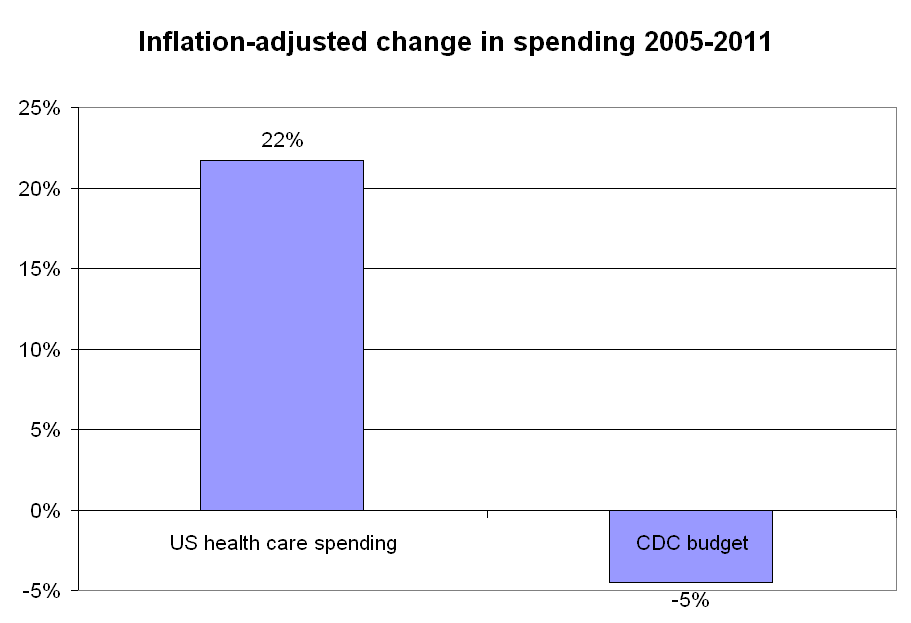Not to get all Aaron Carroll on you, but check out the pie chart below of American health care expenditures in 2010.
Now imagine the federal government needs some money to prevent student loan interest from doubling later this year. What would you cut to get this money?
Right: the smallest slice, government expenditures for public health.
In this case, House Republicans voted on a party-line basis to cut the public health and prevention fund established under health reform. This is actually the second time Congress has cut the Fund, arguably the most innovative and cost-effective component of the entire health reform effort. (See Sarah Kliff here for more on what the fund does.)
Public health has never fared particularly well within the political economy of American healthcare. As a general proposition, the concepts of public health and prevention command virtually universal support. When legislators get down to brass tacks in political bargaining, things have a way of playing out differently.
It’s not hard to see why. If one wants to protect spending on advanced lung cancer treatment, one can count on a powerful coalition of patients, caregivers, physicians, academic medical centers, and pharmaceutical companies to carry the political load. Cancer survivors such as Senator Arlen Spector will, quite properly, help as well. Beautiful human faces and concrete economic interests align to tell a powerful story, both in public and in quiet rooms where tough decisions are made.
If, on the other hand, one wants to protect investments in public health, one often finds that the immediate beneficiaries are disorganized, diffuse, politically marginal constituencies in poor position to command resources. The human story is different, too. Is there anything more goo-goo boring than the efforts to secure funding for financially-stressed smoking cessation quit lines or for immunizations? These evidence-based activities are incredibly cost-effective. They are the very opposite of pork-barrel spending. This is of course their key political deficiency.
Add to this the growing ideological polarization associated with public health. The tobacco, alcohol, beverage, and fast food industries have never been enamored of many public health activities. In large part because of the National Rife Association, the Centers for Disease Control and Prevention (CDC) is specifically enjoined from researching important facets of gun violence. Cultural conservatives have long opposed family planning and HIV/STI prevention efforts directed at drug users or at sexual minorities. When one considers that public health fits the category of “domestic discretionary” spending, one is hardly surprising that it takes a significant hit.
Although Presidents Bush and Obama both deserve credit for specific public health initiatives such as PEPFAR, on the whole we have allowed our public health infrastructure to atrophy. CDC, our nation’s flagship public health agency, represents about 0.2 percent of the federal budget. Yet as shown below, we’ve allowed its budget to languish in recent years, even as overall health spending continues to grow.
Cuts go deeper within state and local governments battered by the great recession. The Trust for America’s Health reports that median per-capita state public health spending declined by about ten percent between 2008 and 2011. About 49,000 jobs have been lost in state and local public health agencies since 2008, with more to come.
Republicans have been particularly harsh regarding the public health and prevention fund–one of the few available mechanisms that has helped to buffer public health’s budgetary challenge. One GOP staffer labeled the Fund a “slush fund for jungle gyms” (which, come to think of it, wouldn’t be a bad idea). The Obama administration and Congressional Democrats, with some exceptions such as Senator Harkin, have been pretty lukewarm defenders of the fund, too.
There are signs this time of greater Democratic firmness. The Obama administration has threatened to veto further cuts. Minority leader Pelosi called the proposed cuts “continuation of the assault on women’s health.” I suspect we’ll be at this awhile.
(HAP)



